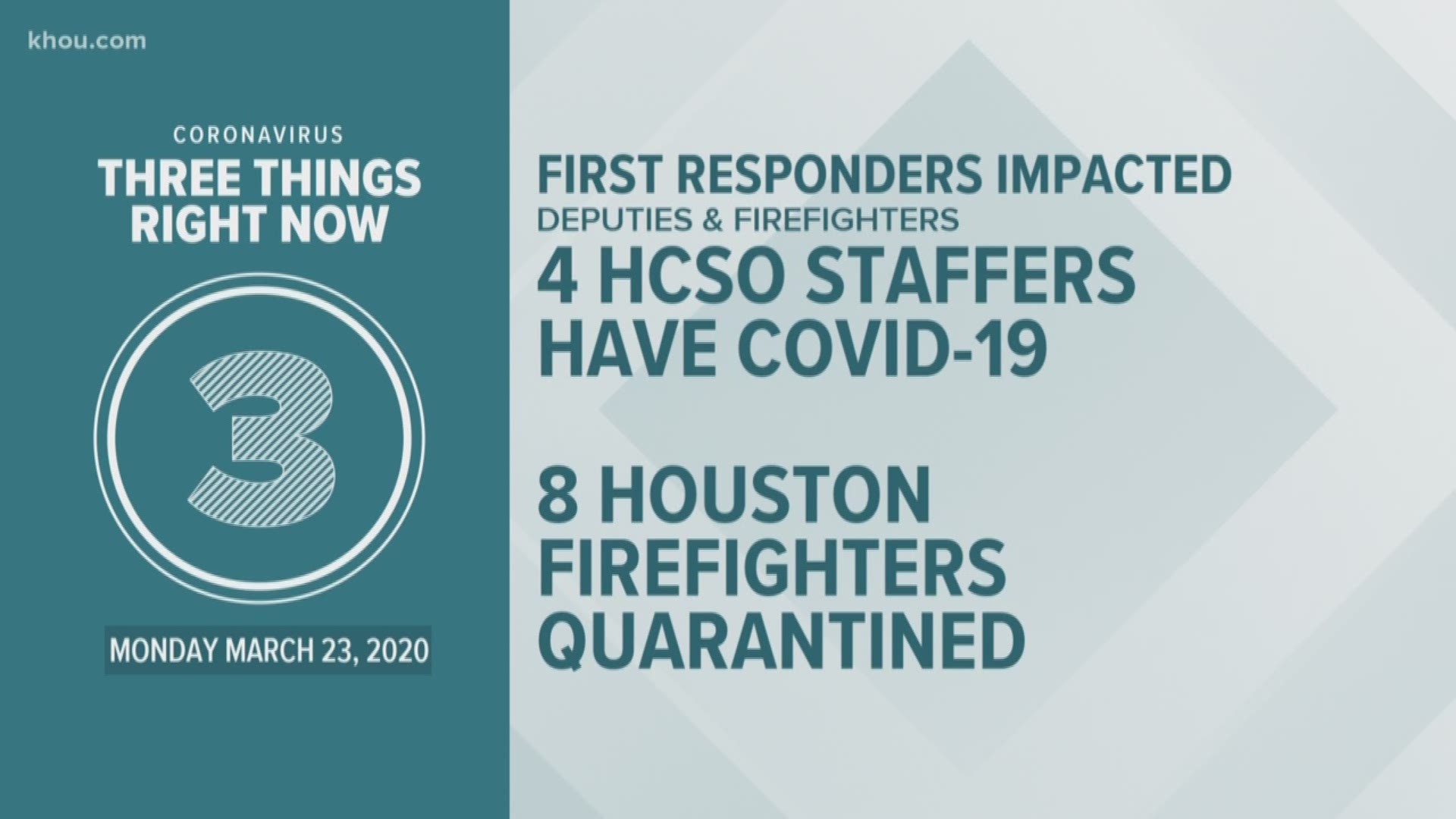HARRIS COUNTY, Texas — Harris County Judge Lina Hidalgo announced Monday morning they have a new online screening tool to held with testing for COVID-19.
Hidalgo said two county drive-through sites for COVID-19 testing are now open to the community at large for symptomatic people. The federal supplies have arrived to make that happen.
Each site will be able to do up to 250 tests per day, per site.
With the readharris.org screening tool, people will see if it is necessary for them to be tested.
Here are the steps if you have a fever and dry cough:
- Visit the website here
- Complete the online screening
- You will be given a unique identifier number and a number to call
- You will be given test locations to take your identifier.
“I want to make sure folks know that we want folks who are tested to have symptoms,” the county judge said. “If we test folks who are not symptomatic, tests might be negative, false negative.”
The judge also said the federal government will restock the county’s test kits based on how they use them up. She added that she expects people to take advantage of this, including those from neighboring regions.
“While it's open for everyone, we have to prioritize,” the judge said. “We do expect there to be a waiting list, we do expect folks, to have to say, look you're not meeting criteria for top priority. We'll be tweaking as we go along.”
The city of Houston already has a site that's already open. That site will be integrated with the Harris County sites.
If you don't have a computer or internet access
If you don't have a computer, or internet access, you can call the number directly at 832-927-7575. It is only in English now, but it will be in Spanish in a couple of hours, and other languages in the coming days.
The call can be routed to your language.
The county judge reiterated that testing is not treatment, reminding people that if you are sick you should not be out and about.
“Our biggest tool is staying home, social distancing,” she said.
Coronavirus symptoms
The symptoms of coronavirus can be similar to the flu or a bad cold. Symptoms include a fever, cough and shortness of breath, according to the Centers for Disease Control.
Most healthy people will have mild symptoms. A study of more than 72,000 patients by the Centers for Disease Control in China showed 80 percent of the cases there were mild.
But infections can cause pneumonia, severe acute respiratory syndrome, kidney failure and even death, according to the World Health Organization. Older people with underlying health conditions are most at risk.
The CDC believes symptoms may appear anywhere from two to 14 days after being exposed.
Human coronaviruses are usually spread through...
- The air by coughing or sneezing
- Close personal contact, such as touching or shaking hands
- Touching an object or surface with the virus on it, then touching your mouth, nose or eyes before washing your hands.
Help stop the spread of coronavirus
- Stay home when you are sick.
- Eat and sleep separately from your family members
- Use different utensils and dishes
- Cover your cough or sneeze with your arm, not your hand.
- If you use a tissue, throw it in the trash.
Lower your risk
- Wash your hands often with soap and water for at least 20 seconds. If soap and water are not available, use an alcohol-based hand sanitizer.
- Avoid touching your eyes, nose, and mouth with unwashed hands.
- Avoid close contact with people who are sick.
- Clean and disinfect frequently touched objects and surfaces.
- If you are 60 or over and have an underlying health condition such as cardiovascular disease, diabetes or respiratory illnesses like asthma or COPD, the World Health Organization advises you to try to avoid crowds or places where you might interact with people who are sick.
Get complete coverage of the coronavirus by texting 'FACTS' to 713-526-1111.

